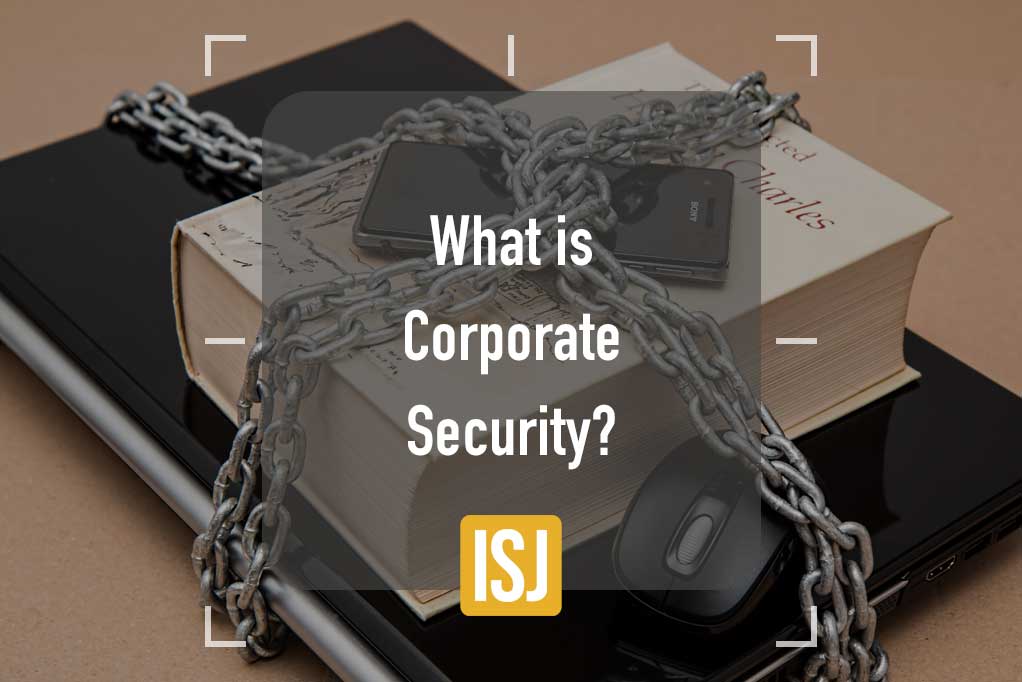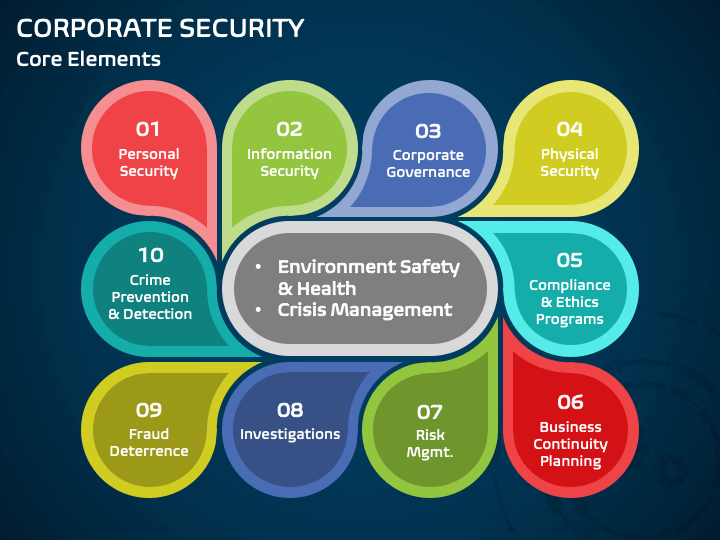Securing Success: A Deep Dive into Corporate Security Methods
Securing Success: A Deep Dive into Corporate Security Methods
Blog Article
From Cybersecurity to Physical Measures: Reinforcing Business Security in a Transforming Globe
By incorporating the toughness of both cybersecurity and physical protection, firms can develop a comprehensive protection strategy that deals with the diverse range of dangers they face. In this conversation, we will certainly check out the transforming hazard landscape, the demand to integrate cybersecurity and physical security, the implementation of multi-factor verification measures, the value of staff member understanding and training, and the adjustment of protection procedures for remote workforces. By examining these essential areas, we will certainly acquire beneficial understandings right into how companies can enhance their corporate security in an ever-changing globe.
Comprehending the Changing Threat Landscape
The developing nature of the modern-day globe necessitates a thorough understanding of the transforming risk landscape for reliable business protection. In today's interconnected and electronic age, hazards to business safety have come to be much more intricate and sophisticated. As modern technology developments and companies come to be significantly reliant on electronic facilities, the possibility for cyberattacks, data breaches, and various other safety violations has considerably raised. It is important for companies to stay educated and adapt their safety gauges to address these progressing threats.
One trick facet of understanding the changing threat landscape is recognizing the various kinds of hazards that companies encounter. Furthermore, physical hazards such as burglary, vandalism, and corporate reconnaissance continue to be widespread worries for services.
Tracking and evaluating the risk landscape is crucial in order to identify possible threats and susceptabilities. This includes remaining updated on the most up to date cybersecurity patterns, evaluating threat intelligence records, and carrying out regular danger evaluations. By comprehending the changing hazard landscape, companies can proactively implement ideal protection procedures to minimize threats and safeguard their assets, online reputation, and stakeholders.
Integrating Cybersecurity and Physical Safety
Integrating cybersecurity and physical safety and security is important for comprehensive company protection in today's interconnected and electronic landscape. As companies progressively count on technology and interconnected systems, the limits in between physical and cyber risks are ending up being blurred. To successfully secure against these threats, an alternative method that incorporates both cybersecurity and physical protection procedures is vital.
Cybersecurity concentrates on safeguarding digital assets, such as systems, data, and networks, from unauthorized accessibility, disturbance, and theft. Physical security, on the other hand, encompasses procedures to protect physical properties, individuals, and centers from dangers and susceptabilities. By incorporating these 2 domains, organizations can deal with susceptabilities and dangers from both digital and physical angles, thus improving their general protection pose.
The combination of these 2 disciplines permits for an extra thorough understanding of security threats and allows a unified reaction to occurrences. For instance, physical accessibility controls can be enhanced by integrating them with cybersecurity protocols, such as two-factor verification or biometric recognition. Likewise, cybersecurity measures can be matched by physical safety and security measures, such as security electronic cameras, alarms, and safe gain access to factors.

Carrying Out Multi-Factor Authentication Measures
As organizations progressively prioritize detailed safety procedures, one reliable method is the implementation of multi-factor verification steps. Multi-factor authentication (MFA) is a safety and security method that calls for users to give multiple forms of recognition to access a system or application. This approach includes an additional layer of security by combining something the user knows, such as a password, with something they have, like a finger print or a security token.
By executing MFA, organizations can substantially enhance their protection stance - corporate security. Conventional password-based authentication has its restrictions, as passwords can be easily endangered or neglected. MFA minimizes these dangers by including an additional authentication factor, making it extra difficult for unapproved people to access to delicate details
There are several kinds of multi-factor verification more info here approaches offered, including biometric authentication, SMS-based verification codes, and equipment tokens. Organizations need to evaluate their specific requirements and select the most ideal MFA option for their demands.
Nevertheless, the application of MFA must be thoroughly prepared and carried out. It is critical to strike an equilibrium between security and use to prevent individual disappointment and resistance. Organizations must additionally take into consideration potential compatibility problems and supply ample training and support to ensure a smooth transition.
Enhancing Staff Member Awareness and Training
To strengthen business safety, companies must focus on boosting staff member awareness and training. Numerous safety breaches occur due to human error or absence of recognition.
Reliable worker awareness and training programs ought to cover a variety of topics, including information protection, phishing attacks, social engineering, password health, and physical security procedures. These programs need to be tailored to the particular demands and duties of various staff member functions within the company. Regular training workshops, sessions, and simulations can assist staff members establish the necessary skills and understanding to respond and determine to security risks successfully.
Furthermore, organizations need to motivate a society of safety and security recognition and supply ongoing updates and tips to keep employees notified concerning the current threats and reduction techniques. This can be done through interior communication channels, such as e-newsletters, intranet portals, and email campaigns. By cultivating a security-conscious workforce, organizations can considerably lower the possibility of safety incidents and safeguard their important assets from unauthorized access or compromise.

Adapting Safety And Security Procedures for Remote Labor Force
Adjusting company safety and security steps to accommodate a remote workforce is necessary in making certain the protection of sensitive information and assets (corporate security). With the increasing pattern of remote job, organizations should carry out ideal safety measures to alleviate the threats connected with this brand-new means of working
One critical aspect of adjusting security procedures for remote job is establishing safe communication channels. Encrypted messaging systems and virtual exclusive networks (VPNs) can aid secure delicate info and stop unapproved access. In addition, companies need to implement the usage of solid passwords and multi-factor authentication to enhance the safety and security of remote access.
An additional vital factor to consider is the implementation of safe and secure remote accessibility options. This entails supplying staff members with protected access to company resources and information via online desktop infrastructure (VDI), remote desktop computer methods (RDP), or cloud-based options. These innovations guarantee that sensitive info click to investigate continues to be safeguarded while making it possible for employees to perform their duties properly.

Last but not least, detailed safety and security awareness training is critical for remote workers. Educating sessions need to cover best techniques for securely accessing and managing sensitive details, identifying and reporting phishing efforts, and keeping the total cybersecurity health.
Final Thought
In final thought, as the danger landscape continues to progress, it is vital for companies to reinforce their safety and security determines both in the cyber and physical domains. Incorporating cybersecurity and physical protection, carrying out multi-factor authentication steps, and improving employee recognition and training are vital steps in the direction of attaining robust corporate safety and security.
In this conversation, we will explore the changing danger landscape, the requirement to incorporate cybersecurity and physical security, the application of multi-factor verification procedures, the click site importance of staff member understanding and training, and the adaptation of security steps for remote workforces. Cybersecurity procedures can be enhanced by physical safety and security measures, such as security cameras, alarms, and secure accessibility points.
As companies increasingly prioritize thorough safety and security procedures, one effective method is the execution of multi-factor verification measures.In final thought, as the threat landscape proceeds to advance, it is important for organizations to strengthen their security measures both in the cyber and physical domains. Incorporating cybersecurity and physical safety, carrying out multi-factor verification actions, and improving worker understanding and training are crucial actions in the direction of attaining robust business safety and security.
Report this page